Abstract
The organism most frequently encountered during the 1971 outbreak of enteropathogenic Escherichia coli (EPEC) in soft ripened cheese was a strain that failed to ferment lactose broth within 48 h. Since existing methods for E. coli are dependent upon fermentation of this sugar, such strains can remain undetected, particularly when present in low numbers. Therefore, a cultural testing procedure was developed to insure isolation of both lactose-positive and -negative strains. This method used GN broth, modified by substituting lactose and arabinose for glucose and D-mannitol, as an enrichment medium. MacConkey agar, used as a plating medium, was modified by substituting arabinose for half the lactose. The cultural procedure was used in conjunction with a fluorescent antibody method to screen cheese for the presence of presumptive enteropathogenic E. coli. Suspected isolates were subjected to further biochemical and serological testing and identified as members of specific serogroups. These methods were used for the analysis of over 2,000 wheels of cheese; over 10% of the samples tested were found to contain strains belonging to six different serogroups associated with diarrheal diseases. No attempt was made to confirm pathogenicity by in vivo tests. Enumeration of E. coli in cheese showed that numbers increased during storage. Cheese with less than 10 organisms/g initially increased to over 105 at room temperature and over 103 at 4 C within 10 days. With higher initial counts, levels up to 109 were found at 4 C. These studies showed that the high levels of E. coli encountered in these products cannot be used as a direct indicator of post-processing contamination.
Full text
PDF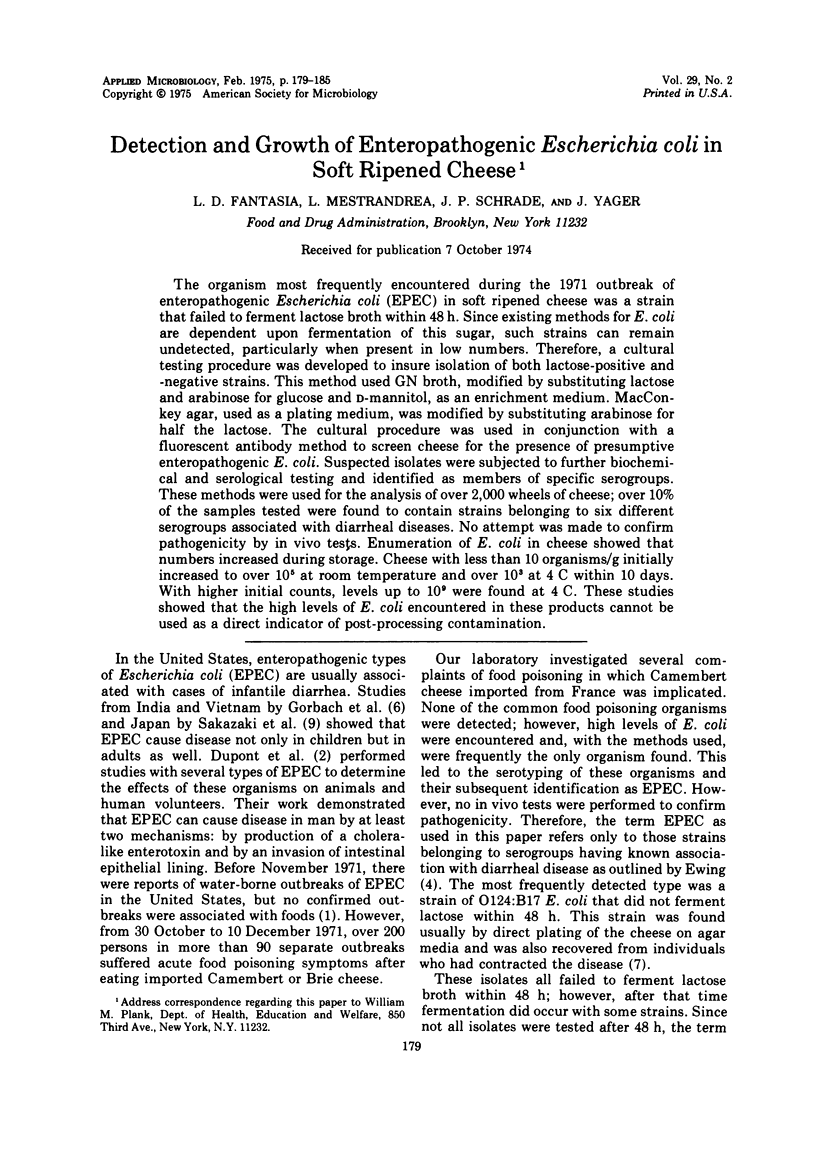
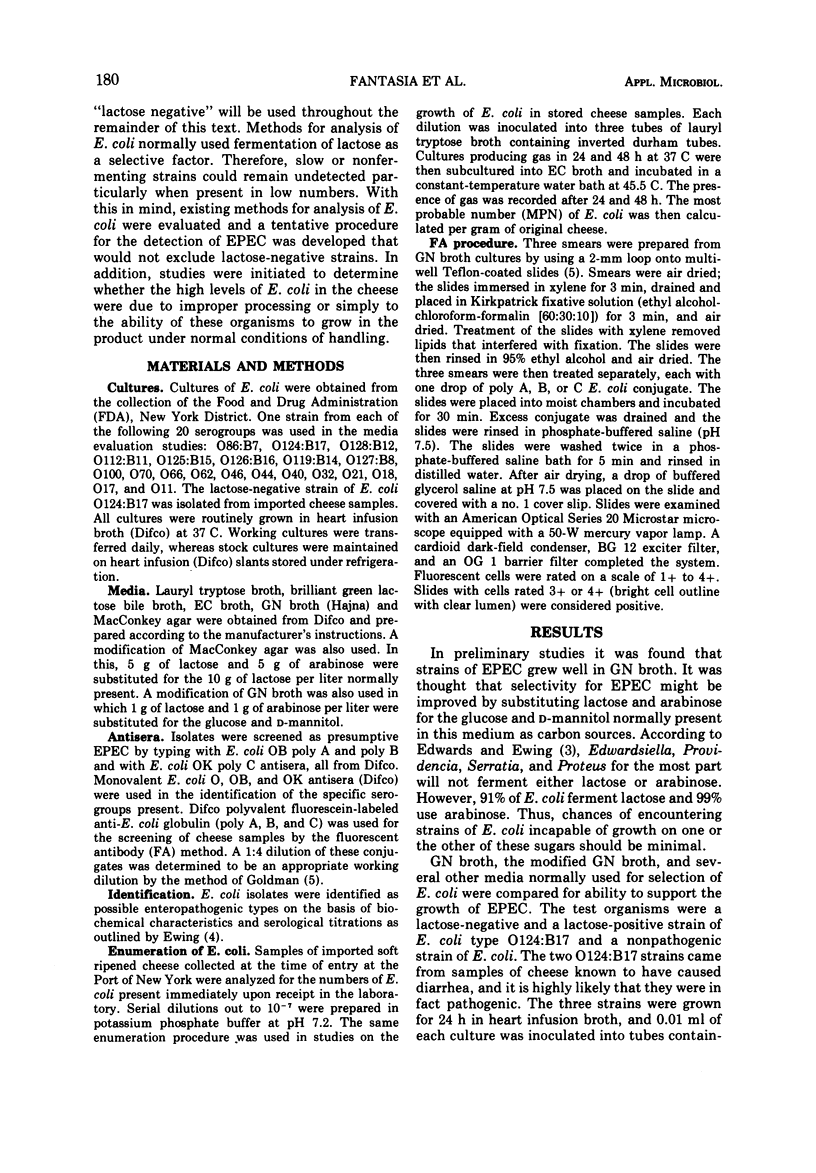
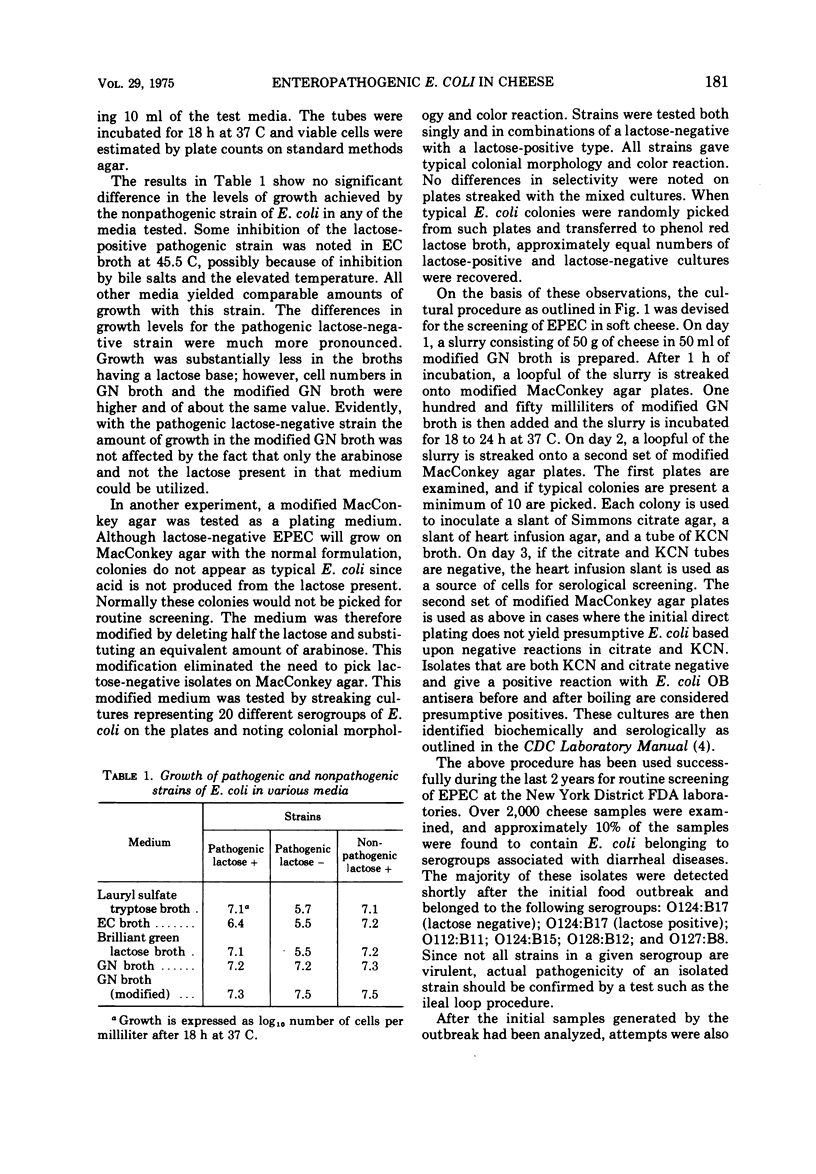
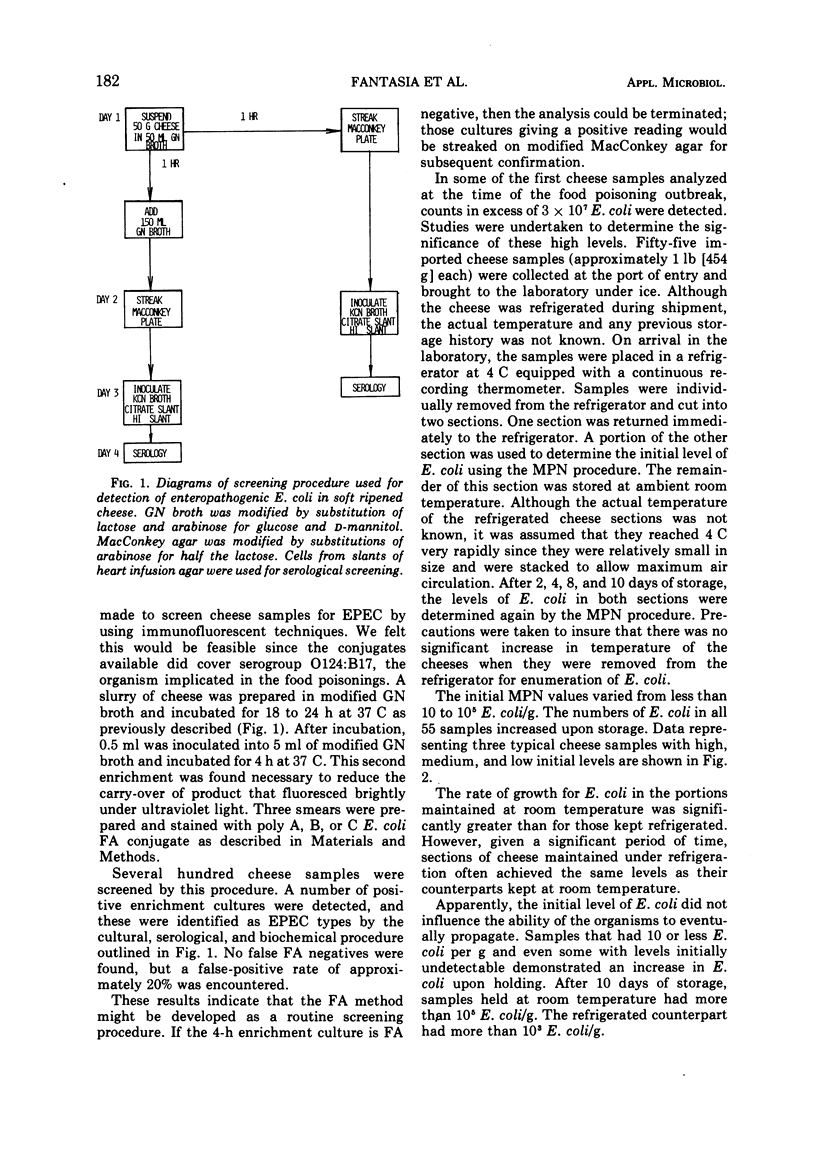

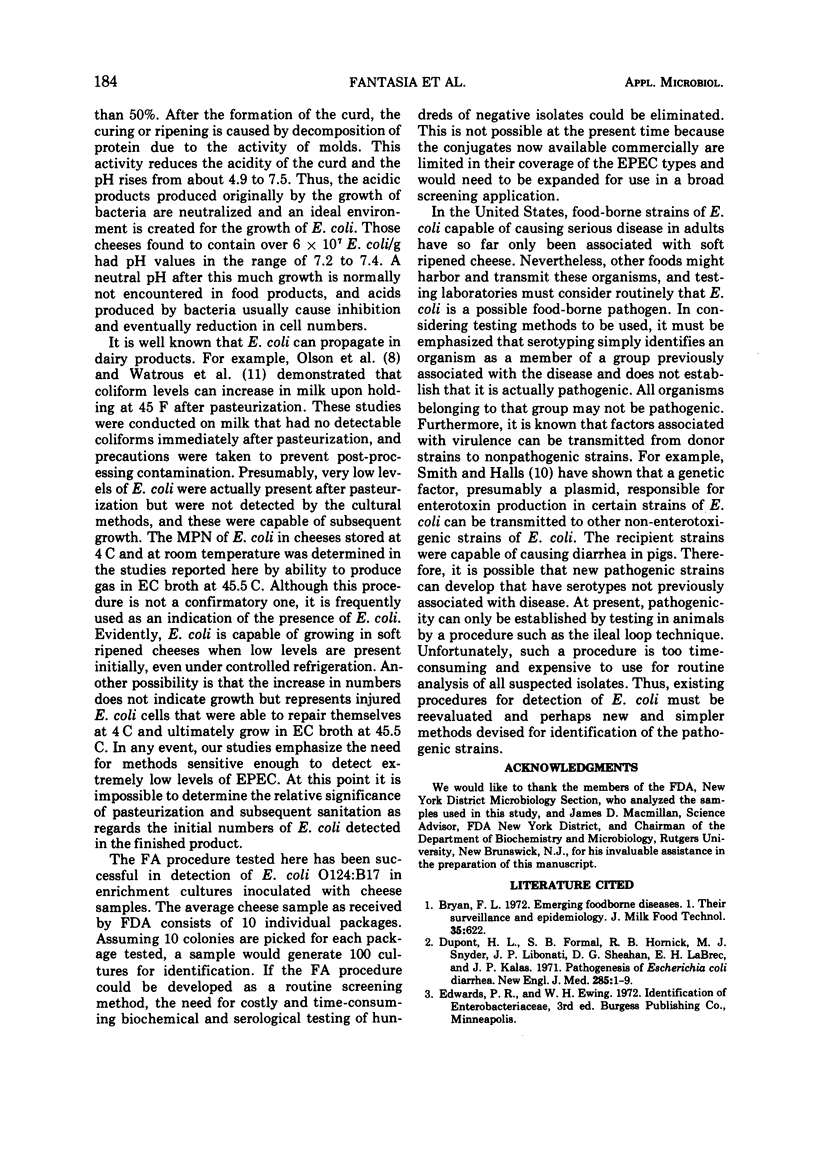
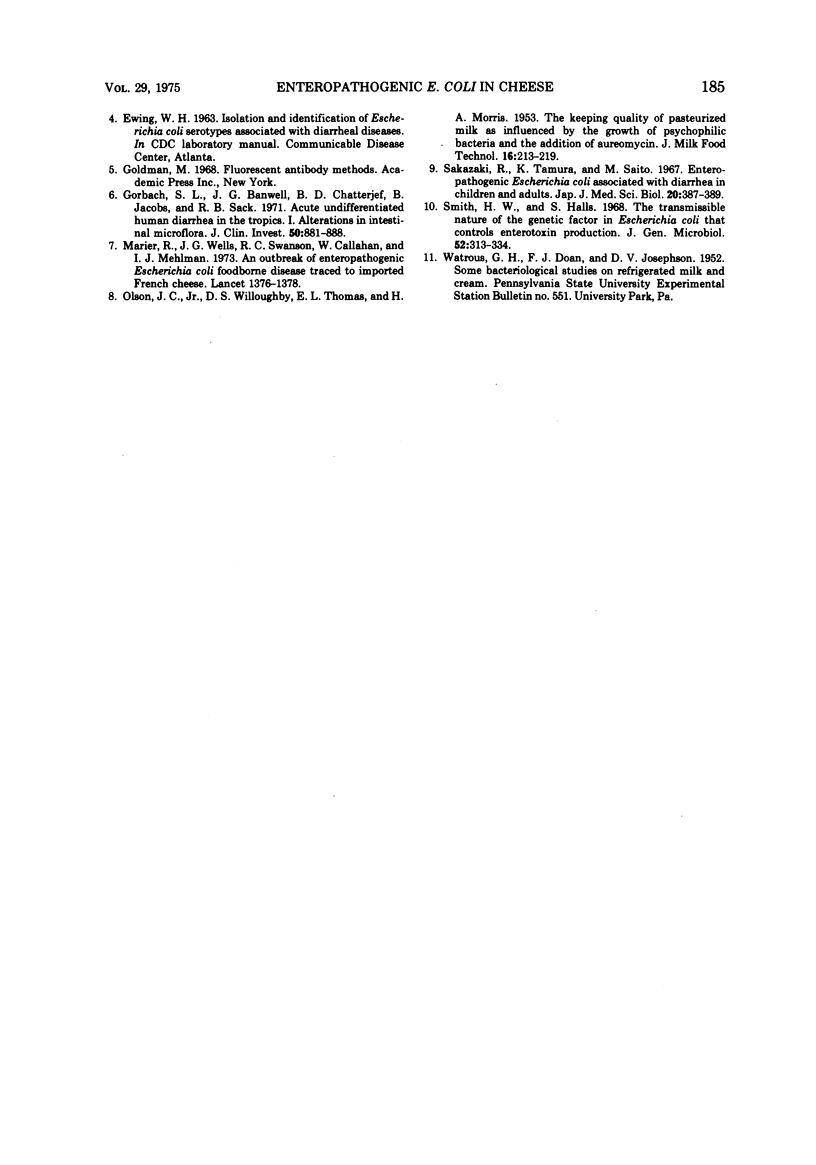
Selected References
These references are in PubMed. This may not be the complete list of references from this article.
- DuPont H. L., Formal S. B., Hornick R. B., Snyder M. J., Libonati J. P., Sheahan D. G., LaBrec E. H., Kalas J. P. Pathogenesis of Escherichia coli diarrhea. N Engl J Med. 1971 Jul 1;285(1):1–9. doi: 10.1056/NEJM197107012850101. [DOI] [PubMed] [Google Scholar]
- Gorbach S. L., Banwell J. G., Chatterjee B. D., Jacobs B., Sack R. B. Acute undifferentiated human diarrhea in the tropics. I. Alterations in intestinal micrflora. J Clin Invest. 1971 Apr;50(4):881–889. doi: 10.1172/JCI106560. [DOI] [PMC free article] [PubMed] [Google Scholar]
- Sakazaki R., Tamura K., Saito M. Enteropathogenic Escherichia coli associated with diarrhea in children and adults. Jpn J Med Sci Biol. 1967 Oct;20(5):387–399. doi: 10.7883/yoken1952.20.387. [DOI] [PubMed] [Google Scholar]


